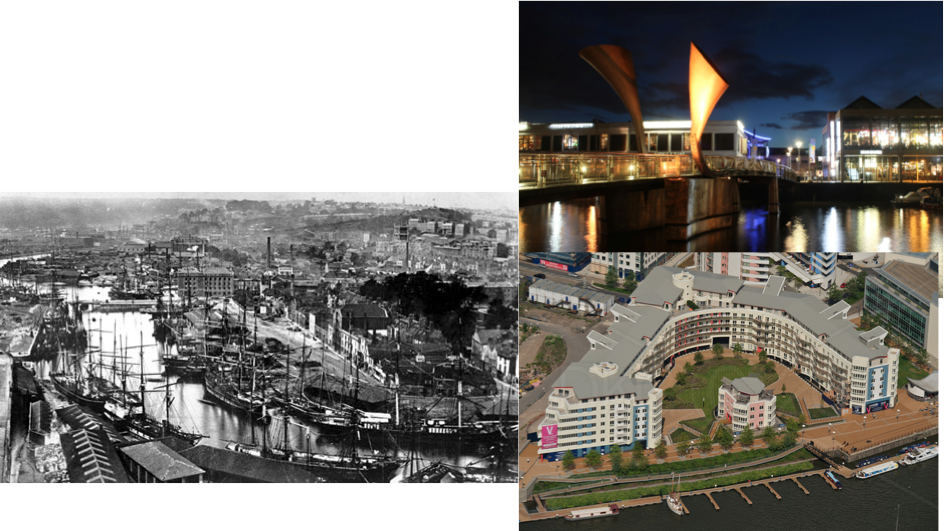How Places Change
Factors of Change
BRISTOL:
- Places are changed by the people who chose to live there as they reshape and reconfigure the places to meet their needs and priorities.
•__FUNCTION CHANGES: __
- The function of an area is its reason, job or purpose for being e.g. industrial, administrative, commercial, retail.
- This can change due to the people that live there and the different influences on their lives.
- Rural areas- food production for those living in rural and urban areas.
Mid 1800s- mechanisation reduced the need for manual labour in fields- led to worker moving to __INDUSTRIAL __towns and cities- cheap labour for producing steel, iron, textiles etc.
- Emerging middle class __needed ways to organise day-to-day life- create __ADMINISTRATIVE functions e.g. courts, banks and even headquarters of COMMERCIAL (restaurants, hotels, businesses) enterprises.
•Some of these functions are now displaced due to globalisation (importing etc) and towns and cities compete to become RETAIL centres with shopping and leisure activities to create the ultimate retail experience.
- Explain what gentrification is, using an example.
- Your answer should include: London Riverside / affluent / pricing out.
Demography
DEMOGRAPHIC CHANGES:
- Ethnic composition: ethnic characteristics of an area.
- Age structure: number of individuals in each age group.
Migrants arriving after the Second World War clustered together in major cities-
e.g. Jamaican migrants in Brixton, London and Pakistani communities in Bradford and Birmingham.
__Racism and prejudice in the UK- __ethnic minority community areas saw decreasing property prices and decline- made worse by poor housing, out-migration and deindustrialisation.
Some areas still suffering from deprivation today e.g. Middlesbrough.
Others areas have become Bohemian hotspots attracting young graduates.
- This reshapes and rebrands the area, if it also brings wealth, this process may be called gentrification.
Gentrification
Gentrification
- is the process of renovating a derelict area by an influx of new and more affluent residents.
- This can be extremely successful if paired with sports clubs, tourism and universities.
However, who is benefiting from this? Is it always an equal process.
__London Riverside example: __
- Brownfield sites (vacated industrial and commercial sites and derelict docks) along the river being transformed and redeveloped.
- Previously unreachable and unlivable areas of the city being transformed into new urban living spaces for both leisure and residence.
Measuring Change
Statistics used to measure change:
•Employment structure
•Demographic characteristics
•Economic development
As well as;
Consequences for local residents and business owners, land use and management and how culture is managed.
- Describe the demographic changes that make changes occur over time.
- Your answer should include: Ethnic composition / migration / age.

